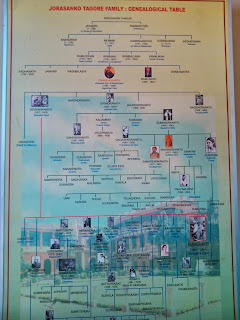Ramendra Sundar Tribedi
Ramendra Sundar Tribedi was born on 22 August, 1864 at Kandi of Murshidabad district in West Bengal. Ramendra was a successful student from his childhood. After obtaining his B.Sc. degree (coming first in the exams), he competed for the prestigious Premchand Roychand Scholarship with physics and chemistry as his subjects. He won that scholarship in 1888.
Ramendra Sundar was a polymath who wrote on a host of themes, including popular science and the philosophy of science. His first articles appeared in the periodical 'Navajiban'. His contribution to the functioning and development of the Bangiya Sahitya Parishad is considered to be momentous. His writings have been used in school and college textbooks in West Bengal and Bangladesh.
In Bengal, Ramendra Sundar's fame rests mostly on his popular science essays. As a popular science writer, Ramendra's commitment seems to have been "to share with everyone else the fun, the delight and ecstasy of science (in Ramendra's case, the themes and findings of modern western science).
This could only be achieved by dissolving the alien terms and themes in an indigenous, flexible, and comprehensible linguistic medium. Thus, when creating scientific terms, he took care to select words which were sweet sounding and easily pronounced, drew examples from mythology, folklore and local traditions…, cemented his prose with humor, lined his comments with mild irony and talked of the gravest things with his tongue in his cheek. In this witty, sly, sceptical, gay and eminently human vein, he dragged science, epistemology and philosophy into the midst of a Bengali adda and domesticated them on the couch of a bhadralok's drawing room."
Among his books some name are to mention such as Prakriti (Collected essays on philosophy), Jigmasa (Collected essays on science), Charit-Katha (Collected essays and lectures on few eminent personalities in Bengali literature), Bichitra Prasanga and Bangalakshmir Bratakatha ctc. This great author breathed his last on 6 June 1919.
Ramendra Sundar was a polymath who wrote on a host of themes, including popular science and the philosophy of science. His first articles appeared in the periodical 'Navajiban'. His contribution to the functioning and development of the Bangiya Sahitya Parishad is considered to be momentous. His writings have been used in school and college textbooks in West Bengal and Bangladesh.
In Bengal, Ramendra Sundar's fame rests mostly on his popular science essays. As a popular science writer, Ramendra's commitment seems to have been "to share with everyone else the fun, the delight and ecstasy of science (in Ramendra's case, the themes and findings of modern western science).
This could only be achieved by dissolving the alien terms and themes in an indigenous, flexible, and comprehensible linguistic medium. Thus, when creating scientific terms, he took care to select words which were sweet sounding and easily pronounced, drew examples from mythology, folklore and local traditions…, cemented his prose with humor, lined his comments with mild irony and talked of the gravest things with his tongue in his cheek. In this witty, sly, sceptical, gay and eminently human vein, he dragged science, epistemology and philosophy into the midst of a Bengali adda and domesticated them on the couch of a bhadralok's drawing room."
Among his books some name are to mention such as Prakriti (Collected essays on philosophy), Jigmasa (Collected essays on science), Charit-Katha (Collected essays and lectures on few eminent personalities in Bengali literature), Bichitra Prasanga and Bangalakshmir Bratakatha ctc. This great author breathed his last on 6 June 1919.




Comments